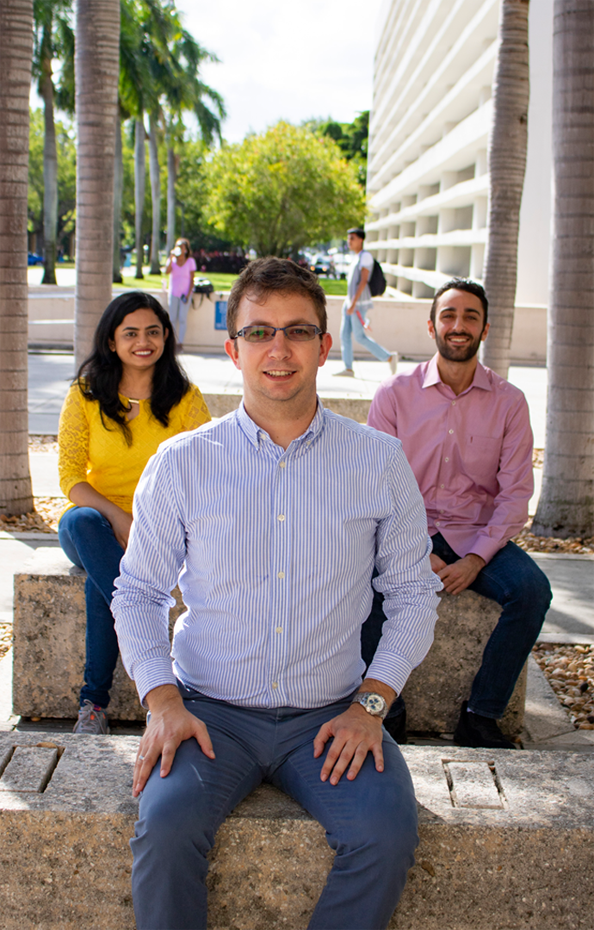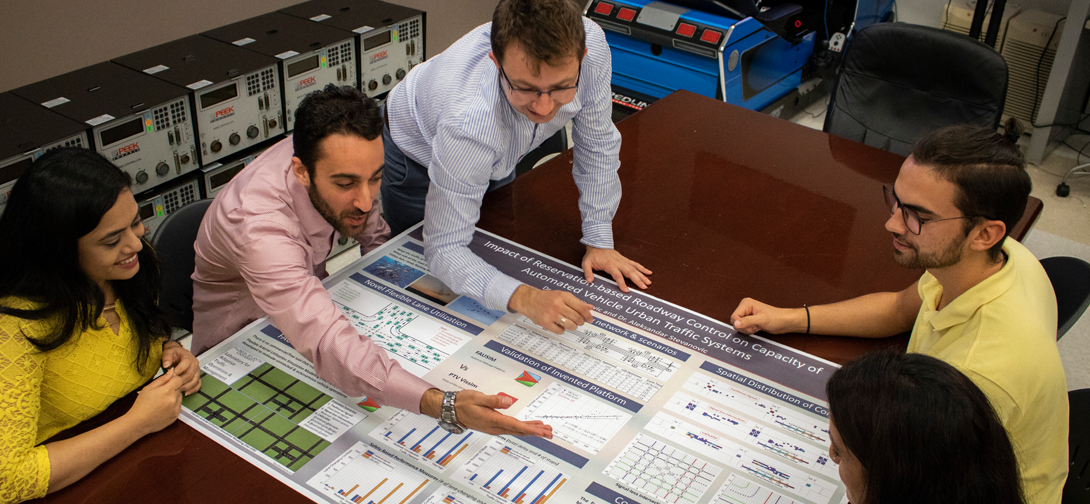From Toy Cars to Urban Gridlock: The Evolution of a Transportation Engineer
Like many kids all over the world, Nikola Mitrovic loved playing with cars when he was growing up in Brus, Serbia. Sometimes his fleet of small vehicles became enmeshed in mini-traffic-jams, reflecting a problem adult drivers face on a daily basis. Although he could not have known it then, developing innovative ways to mitigate that problem was to become his life’s work.
From high school on “I always wanted to go into engineering,” he says. In 2009, he graduated from the University of Belgrade, receiving a bachelor’s degree in traffic and transportation engineering. The following year, he came to FAU as a master’s degree student in the Department of Civil, Environmental and Geomatics Engineering under the mentorship of Aleksandar Stevanovic, Ph.D., director of the Laboratory for Adaptive Traffic Operations & Management. For his doctoral program, Mitrovic went to Nanyang Technological University in Singapore, focusing on the development of intelligent transportation systems. Returning to FAU in 2016, as a post-doctoral research assistant and adjunct faculty member, Mitrovic has resumed his work in Stevanovic’s lab.

Throughout all of his travels, Mitrovic has remained intent on developing 21st century solutions to the ever-worsening problem of urban gridlock. “It’s something that has to be addressed, not only in South Florida but everywhere,” he says, adding that recent technological advances have opened new windows of opportunity.
Tools that are being developed, tested and refined in Stevanovic’s lab include adaptive traffic signal control systems, which have the ability to direct red lights to turn green based upon actual traffic conditions rather than at pre-set time intervals. Another such take is an intelligent reservation system that manages the movement of autonomous vehicles over the entire road.
These and other efficiency-promoting “smart systems” projects have drawn partnership support from municipal and county governments, major funding entities such as the National Science Foundation, and universities around the country and the world. Since its inception in 2009, the lab has been awarded $2.2 million in external research funding.
“Professor Stevanovic has created a vibrant, high-tech lab environment that I find very attractive and challenging," Mitrovic said. "In addition to benefitting from Professor Stevanovic’s guidance, I am developing my own teaching and mentoring skills as I work with undergraduate and graduate students.”
Stevanovic says, “With his interdisciplinary approach, combining knowledge in civil engineering and computer science, Mitrovic has made some major contributions to the research projects and scientific papers that we have completed. Equally important, Mitrovic is a mentor to younger graduate research assistants. He’s shown patience and the ability to teach by example, focusing on work ethics, scientific methods, research resourcefulness, and advanced technical communications — all highly valuable skills for their future careers.”
If you would like more information, please contact us at dorcommunications@fau.edu.
